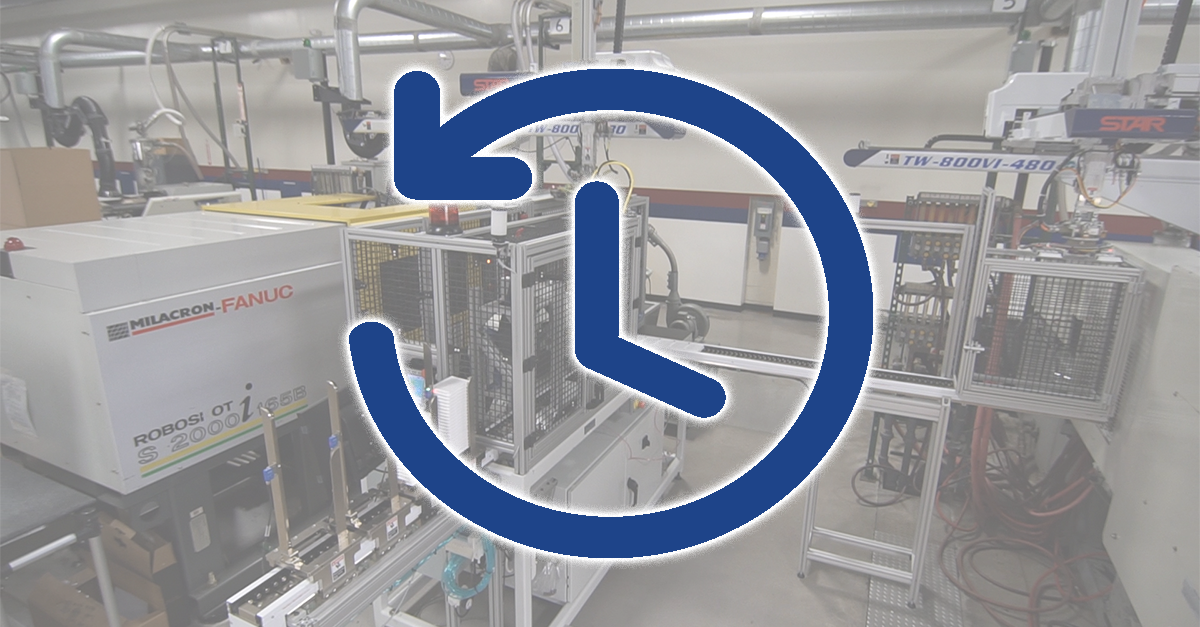One technology has played a vital role in revolutionizing the manufacturing industry in multiple fields and domains, from military and defense to medicine and dentistry. Injection molding is a result of human ingenuity and the relentless pursuit of efficiency in plastic production and manufacturing.
The history of injection molding is the story of how we learned to produce high-quality, complex products cost-effectively and timely. However, the history of injection molding is not just about machines and processes; it's about the people and companies that pushed the boundaries of what was possible. It's about the invention and evolution of materials that transformed our world, like plastics, and the societal and economic changes that drove these developments forward.
Learning the history of injection molding can be the first step toward understanding the role of this manufacturing technique in today's economy and many critical industries.
The Birth of a Revolutionary Technique
In the late 19th century, the first rudimentary injection molding machine was developed. It started as a simple device that used a plunger to inject plastic into a mold. The early plastic materials used were celluloid and, later, vinyl, which were soluble forms of plastic that could be molded into different shapes.
The first injection molding machine was patented in 1872 by John Wesley Hyatt, an American inventor trying to find a substitute for ivory billiard balls. While his machine was considerably less polished than today's standards, it laid the foundation for a manufacturing revolution in multiple industries.
By the 1930s, considerable advancements had been made. The invention of the extrusion screw injection machine in 1946 by American inventor James Watson Hendry was a significant milestone. This machine used a screw-type plunger to improve the efficiency of the injection process. It allowed for precise control over the injection speed and the molded plastic quality, leading to superior finished products.
The Rise of Plastics: A Perfect Match
The history of injection molding cannot be separated from the history of plastic and plastic-like materials and alternatives. That's because the development and popularization of synthetic plastic materials in the early 20th century opened up new possibilities for plastic injection molding.
One of the advantages of plastics in the manufacturing process is their versatility. They can be molded into virtually any shape, are lightweight, and have excellent durability compared to other non-plastic materials previously used in manufacturing, like metal, wood, and glass. Plastic injection molds were cheaper and quicker to produce than metal molds, making plastic a cost-effective choice for manufacturers.
The injection molding factory became a hotbed of innovation as manufacturers experimented with different types of plastic material. Thermoplastic materials became particularly popular, which can be heated and cooled repeatedly without losing shape. These materials allowed for the mass production of a wide variety of consumer products, from toys to car parts.
The Mass Production Revolution: Efficiency at its Finest
As manufacturers recognized the economic potential of injection molding, the process was refined and optimized. The injection unit was improved, leading to faster production times and lower costs. Using injection machines in mass production marked a significant shift in manufacturing, allowing for the efficient production of complex plastic components.
Before the advent of this technique, producing complex shapes in large quantities was a time-consuming and expensive task. Injection molding changed the process. It allowed manufacturers to quickly create thousands, even millions, of identical parts, dramatically reducing the cost per unit.
Real-Life Examples of Products Made Possible Through Injection Molding
Plastic injection molding has a broad range of applications. In the medical industry, injection molding is crucial in producing sterile, high-precision components essential for patient care. Items like syringes, surgical instruments, and parts for diagnostic equipment are commonly manufactured using this method.
The defense industry also benefits significantly from injection molding, particularly in manufacturing durable, lightweight components. From casings for electronics to parts of advanced weaponry systems, this technology offers both cost-effectiveness and reliability. Even protective gear, such as helmets and body armor, often incorporates injection-molded parts, providing soldiers with equipment that combines strength and reduced weight.
Injection Molding Goes High-Tech: Automation and Robotics
Today, injection molding services are being transformed by advancements in technology. Automation and robotics are increasingly incorporated into the injection molding process, leading to greater efficiency and precision.
Robotic arms can help polish the final parts and even check quality control. Automation software can monitor and adjust the injection process in real-time, ensuring optimal performance and minimizing waste.
As technology continues to improve, the capabilities of injection molding will only grow. It's an exciting time for the industry, and the future looks bright. Another significant advancement in the field of injection molding is the integration of intelligent technologies and the Internet of Things (IoT). This technological leap has enabled more precise control over the molding process, enhancing product quality and manufacturing efficiency.
Crescent Industries' Contributions to Modern Injection Molding
Crescent Industries stands out among the many companies that have contributed to the history of injection molding. With decades of experience in the field, we have consistently pushed the boundaries of what is possible with injection molding.
From developing innovative plastic injection molds to pioneering advanced materials, we have been at the forefront of the industry's evolution. Our commitment to quality and efficiency has made us a trusted partner across the medical device, military, and industrial markets.
We are committed to continuing our tradition of innovation and excellence and look forward to playing our part in the next chapter of the history of injection molding. Learn more about our injection molding services or discuss a potential project by contacting us.


